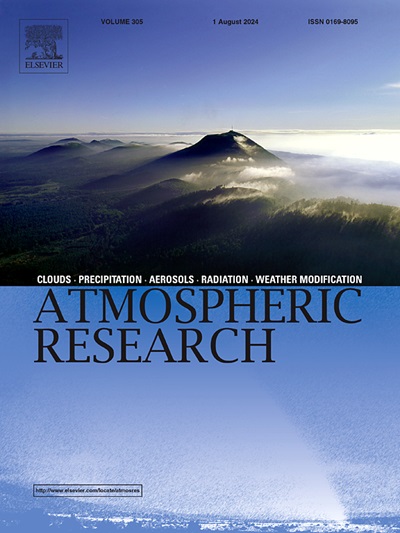20 世纪初无与伦比的类似 EA 的主导变率模式凸显了了解北大西洋气候系统非稳态性的必要性
IF 4.5
2区 地球科学
Q1 METEOROLOGY & ATMOSPHERIC SCIENCES
引用次数: 0
摘要
北大西洋大尺度大气变率的主要冬季模式是北大西洋涛动(NAO)、东大西洋(EA)和斯堪的纳维亚(SCA)模式。本研究考察了它们在仪器周期内的十年变率。我们确定了 NAO 与 EA 和 SCA 相位之间相互作用改变欧洲西风和降水异常的阶段,如果只考虑 NAO 相位,这些变化会被忽视。此外,我们还展示了 EA 成为主导模式的时期,这可能是由自然海洋-大气耦合变率驱动的,可加强气候重建和预测。这项研究还为了解西北大西洋环流作用中心的变化提供了新的视角。最近的转变(1980 年代后)在仪器周期内明显不同。与以往的 NAO 模式变化不同的是,EA 和 SCA 同时增强,导致亚速尔群岛高地扩大,并与大西洋海脊和/或斯堪的纳维亚阻塞相结合。这导致欧洲南部较为干燥,而北部较为潮湿。NAO、EA 和 SCA 的同时增强支持了亚速尔群岛高地向中欧扩张的假设。虽然本研究并未将这一变化归因于全球变暖,但 20 世纪 80 年代后北部 NAO 中心的东移表明,大气和海洋变暖在一定程度上产生了人为影响。因此,尽管最近的西北大西洋环流重构没有发现 20 世纪后半叶的奇异信号,我们仍建议对这一问题保持开放态度。本文章由计算机程序翻译,如有差异,请以英文原文为准。
Unparalleled EA-like leading mode of variability in the early 20th century highlights the need for understanding non-stationarity in the North Atlantic climate system
The dominant winter modes of large-scale atmospheric variability in the North Atlantic are the North Atlantic Oscillation (NAO), East Atlantic (EA), and Scandinavian (SCA) patterns. This study examines their multi-decadal variability over the Instrumental Period. We identify stages through which interactions between NAO and both EA and SCA phases alter westerly winds and precipitation anomalies in Europe, which would be overlooked if only NAO phases were considered. Additionally, we show periods where EA becomes the leading mode, likely driven by natural ocean-atmosphere coupling variability, which can enhance climate reconstructions and projections. This study also provides new insights into shifts in NAO action centers. The recent shift (post-1980s) is notably distinct within the Instrumental Period. Unlike previous NAO pattern variations, EA and SCA intensify simultaneously, contributing to an expansion of the Azores High, combined with the Atlantic Ridge and/or Scandinavian Blocking. This results in drier conditions in southern Europe and wetter conditions in the north. The simultaneous intensification of NAO, EA, and SCA supports hypotheses of the Azores High expanding towards Central Europe. While this study does not attribute the shift to global warming, the eastward displacement of the northern NAO center post-1980s suggests some anthropogenic forcing through atmospheric and oceanic warming. We thus propose keeping this issue open, despite recent NAO reconstructions not identifying a singular signal in the latter half of the 20th century.
求助全文
通过发布文献求助,成功后即可免费获取论文全文。
去求助
来源期刊

Atmospheric Research
地学-气象与大气科学
CiteScore
9.40
自引率
10.90%
发文量
460
审稿时长
47 days
期刊介绍:
The journal publishes scientific papers (research papers, review articles, letters and notes) dealing with the part of the atmosphere where meteorological events occur. Attention is given to all processes extending from the earth surface to the tropopause, but special emphasis continues to be devoted to the physics of clouds, mesoscale meteorology and air pollution, i.e. atmospheric aerosols; microphysical processes; cloud dynamics and thermodynamics; numerical simulation, climatology, climate change and weather modification.
 求助内容:
求助内容: 应助结果提醒方式:
应助结果提醒方式:


